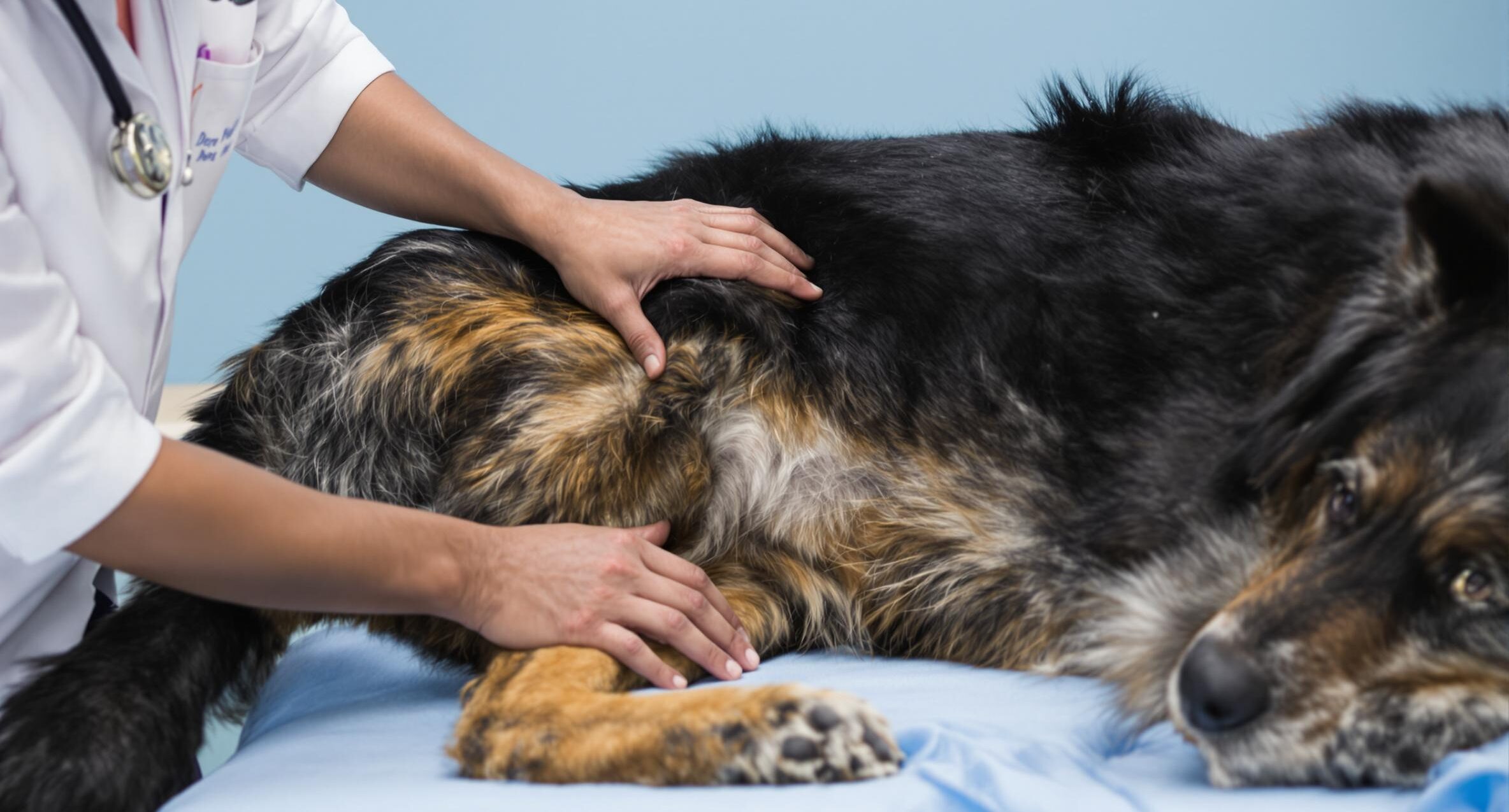Understanding Arthritis Treatment for Dogs: Easy Steps to Comfort Your Pet

Key takeaways:
- Identify early signs of arthritis in your dog, such as reluctance to climb stairs or changes in movement patterns, to ensure timely intervention.
- A balanced combination of medications, natural remedies, and lifestyle adjustments can greatly enhance your dog’s comfort and quality of life with arthritis.
- Regular vet check-ups and appropriate joint supplements can significantly improve mobility and prevent further joint damage in dogs with arthritis.
Is your dog slowing down on walks or taking extra time to climb the stairs? These small changes might be early signs of joint discomfort, which many dogs face as they age. The good news is that there are simple ways to support your dog’s comfort and mobility, starting today.
Proactive arthritis care can go a long way in helping your dog stay active and happy. While arthritis is more common in middle-aged and senior dogs, it’s never too early to take steps that support joint health. PetHealthMD helps you understand your options to make an informed care plan with your vet.
What is arthritis in dogs?
Arthritis, also known as osteoarthritis, is a long-term condition that causes the smooth cartilage in your dog’s joints to gradually wear away. Bones can rub together without this cushioning, causing inflammation, pain, and stiffness. This can affect any joint, but it’s especially common in the hips, knees, elbows, and spine.
Although older dogs are more likely to develop arthritis, it can also affect younger dogs, especially those with joint injuries, genetic conditions like hip dysplasia, or excess weight. Larger breeds tend to be more vulnerable because of the extra stress their weight places on joints. While there’s no cure, early treatment can slow the progression of arthritis and improve quality of life.
Signs of arthritis in dogs
Dogs tend to mask discomfort, so the signs of arthritis may be easy to miss at first. Here’s what to watch for:
Slow to get moving
If your dog appears stiff or slow when rising from rest — especially in the morning — arthritis could be the cause. They might loosen up after a bit of movement, but the stiffness often returns later.
Changes in daily activities
Loss of interest in running, playing fetch, or jumping into the car may be more than aging. These gradual changes often reflect joint discomfort.
Different walking patterns
You might see limping, favoring one leg, or hesitating on stairs. Dogs sometimes shift their weight or move cautiously to reduce pain.
Changes in behavior
Pain may cause your dog to be less social or more irritable. Avoiding touch, sleeping more, or skipping playtime are all signs worth discussing with your vet.
Exploring effective treatments for arthritis in dogs
Managing arthritis is more than just easing pain — it’s about helping your dog maintain mobility, enjoy daily activities, and stay engaged with the people and routines they love. With your veterinarian’s guidance, you can build a treatment plan that blends medication and supportive therapies tailored to your dog’s specific needs. Many dogs benefit most from combining approaches that work together over time.
Pain relief through NSAIDs
Nonsteroidal anti-inflammatory drugs (NSAIDs) are one of the most common and effective ways to manage arthritis pain in dogs. Prescription medications such as Rimadyl, Deramaxx, and Novox help reduce inflammation by blocking prostaglandins — natural chemicals that trigger swelling and joint pain. By relieving discomfort, NSAIDs make it easier for dogs to move, stretch, and exercise, which supports better long-term joint function.
Because NSAIDs can affect the stomach, kidneys, or liver, they should only be used under veterinary supervision. Your vet may recommend routine bloodwork to monitor organ function and adjust dosing as needed to ensure your dog stays healthy while on these medications.
Corticosteroids for short-term relief
Corticosteroids like prednisone and prednisolone can reduce inflammation quickly and are sometimes used to help dogs through severe flare-ups. These medications mimic the body’s natural hormones, but in much higher concentrations. While they can be effective, they’re typically used only for short-term relief due to the risk of side effects with long-term use. Regular veterinary check-ups and bloodwork are essential when corticosteroids are part of your dog’s treatment plan.
Physical therapy and rehabilitation
Arthritis doesn’t just affect joints — it can also lead to muscle loss and imbalance. That’s why physical rehabilitation is such an essential part of long-term care. Gentle, low-impact exercises tailored to your dog’s ability can help maintain muscle tone, support joint alignment, and improve balance. Water-based therapy, like underwater treadmill sessions, allows dogs to move freely without putting too much pressure on painful joints. Many dogs enjoy these sessions, and they’re often a highlight of their routine.
Targeted joint injections
For dogs who need extra help managing pain in specific joints, your veterinarian might recommend intra-articular injections. These injections directly relieve the affected area, reducing inflammation and improving function without relying solely on oral medications. They may be especially helpful for dogs with arthritis in one or two joints or those who don’t tolerate NSAIDs well.
Advanced therapies and surgical options
In more advanced cases, your vet may suggest non-invasive therapies like laser therapy, which uses focused light to reduce inflammation and promote healing. This treatment is painless and typically well tolerated by most dogs. In some situations, surgery may be necessary to correct structural issues or replace severely damaged joints. However, many dogs find lasting relief through medical management and physical therapy alone, especially when treatment begins early.
Natural remedies and lifestyle adjustments for canine arthritis

While not a replacement for vet care, supportive daily routines can enhance your dog’s comfort:
Encourage gentle movement
Daily walks on soft surfaces like grass, or swimming can keep your dog active without straining joints. Consistency helps, but be sure to adapt to your dog’s pace and energy levels.
Use massage and stretching for comfort
A gentle massage can increase circulation and relax muscles. Light stretching — done slowly and safely — can also improve range of motion.
Make home adjustments that reduce strain
Place non-slip rugs on smooth floors and consider ramps or stairs for easier access to beds or vehicles. Orthopedic beds offer joint support for better rest.
Add inflammation-fighting foods
Cooked salmon or sardines provide joint-supportive omega-3s. A pinch of turmeric might also help, but check with your vet before changing your dog’s diet.
Explore holistic therapies
Hydrotherapy and acupuncture are increasingly popular treatments for arthritis. When used as part of a comprehensive plan, these treatments can improve mobility and comfort.
Frequently asked questions (FAQs) about arthritis treatment for dogs
Can I help prevent arthritis in my dog before symptoms start?
Yes. You can take steps to support your dog’s joint health early on. Keeping your dog at a healthy weight reduces stress on their joints, and daily low-impact activities like walking on grass or swimming can help maintain strength and mobility. These habits are essential for large or aging dogs.
What can I do at home to support my dog’s joints long-term?
Small changes around the house can make a big difference. Add non-slip rugs, use ramps to avoid jumping, and offer a supportive orthopedic bed for restful sleep. Twice-yearly vet checkups are also a smart way to catch early signs of arthritis so you can adjust care before discomfort sets in.
Can arthritis in dogs worsen during certain seasons or weather conditions?
Yes, many pet parents notice that their dog’s arthritis seems worse during cold, damp weather. While science hasn’t fully explained why, changes in barometric pressure, temperature, and humidity may contribute to increased stiffness or discomfort. Keeping your dog warm and dry during colder winter months can help, and you can talk to your vet about adjusting their care plan seasonally.
What should I do if my dog resists exercise due to arthritis pain?
If your dog seems reluctant to move, it’s important not to force activity. Instead, check in with your veterinarian to rule out a flare-up or worsening condition. Shorter, more frequent walks and gentle movement in a calm environment (like walking on grass) can help rebuild confidence over time.
Is arthritis in dogs the same as hip dysplasia?
Not quite. Hip dysplasia is a genetic condition where the hip joint doesn’t form properly, leading to arthritis later on. Arthritis, by itself, refers to joint inflammation and degeneration from any cause, including dysplasia, injury, or aging. Many dogs with hip dysplasia develop arthritis, but they’re not interchangeable terms.
Can puppies or young dogs get arthritis?
While less common, arthritis can affect young dogs, especially if they’ve had joint injuries or surgery or were born with conditions like elbow or hip dysplasia. Catching it early can help protect their long-term mobility.
Is it safe to give my dog over-the-counter pain relievers like ibuprofen or acetaminophen?
No — human medications like ibuprofen, acetaminophen, and naproxen are toxic to dogs and should never be given unless specifically prescribed by your veterinarian. Always talk to your vet before offering any medication, even natural remedies.
Taking action: Support your dog’s joint health
Helping your dog feel more comfortable starts with a thoughtful, balanced approach. You can make a real difference in their quality of life by combining gentle exercise, healthy weight management, and supportive daily routines. Even small changes — like switching to a joint-friendly diet or adding low-impact activity — can ease stiffness and keep them moving with confidence.
Your veterinarian is your best partner in creating a plan tailored to your dog’s needs. Keep an eye on signs like stiffness, low energy, or a drop in playfulness — these subtle changes can help guide when it’s time to adjust care.
Ready to support your dog’s comfort today? PetMeds makes it easier with vet-approved pain relief options, supplements, and mobility-support products delivered right to your door.





